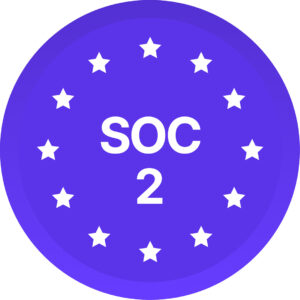For a long time, DEI training has looked the same: a mandatory session, a few slides, maybe a quiz, and then it’s back to business as usual. The intention is good, but let’s be honest, it rarely sticks. Most people don’t see how it connects to their day-to-day. And most companies don’t see real change.
- Nearly 75% of employees say mandatory DEI training doesn’t change behavior
- Only 20% of companies report meaningful results from their DEI efforts
The message is clear: Compliance-focused training alone doesn’t build culture. It maintains the status quo rather than shifting it.
Why the old DEI model falls short
One-off sessions often feel disconnected from daily work and lack follow-up. They address symptoms, not systems. They also overlook critical factors that shape employee experience: motivation, opportunity, belonging, and fairness.
Forward-thinking companies are reexamining this model. They’re treating workplace learning into a strategic lever, one that drives culture, performance, and inclusion in real, measurable ways.
This shift requires a different kind of approach, one that uses data & insights to identify what people need to succeed, followed by targeted support that’s timely and actionable.
What’s working now: A smarter learning strategy
Organizations that invest in strategic workplace learning are seeing improvements in retention, productivity, engagement, and internal mobility.
Their approach typically focuses on four core capabilities:
1. Tracking Motivation, Continuously
Motivation isn’t just a feel-good concept or a soft metric. It’s a leading indicator of performance. Teams with strong motivation and engagement see:
- Teams with high engagement see 21% higher profitability
- Engaged workforces outperform low-engagement ones by 202%
Motivation data also acts as an early warning system. When employees are disengaged, it signals gaps in culture, leadership, inclusion or the system itself.
2. Surfacing Systemic Barriers
Surface-level surveys don’t always reveal what’s really happening inside an organization. With better tools, teams can uncover answer questions like:
- Are caregivers reporting lower motivation than peers?
- Do women and racialized employees face recurring obstacles to advancement?
- Are burnout rates concentrated in specific teams or identity groups?
These aren’t individual performance issues, they’re cultural design flaws.
3. Delivering Targeted Learning Interventions
Generic content won’t solve complex problems. The alternative? Personalized, role-specific, and feedback-informed learning is more effective. Examples include:
- Micro-learning modules tied to real skill gaps.
- Leadership training tracks tailored to rising talent from underrepresented groups
When people recognize that training meets their needs, they engage more fully, and the impact lasts longer.
4. Creating a loop of continuous improvement
Sustainable change requires more than one intervention. Leading organizations build learning into an ongoing process:
- Measure motivation and experience regularly
- Analyze patterns and identify improvement areas
- Deliver relevant training based on actual feedback
- Track progress and refine the learning strategy
This cycle turns culture-building into a living, iterative process always adapting, always improving.
The Impact Is Real
Organizations using a data-driven DEI and learning strategy are seeing dramatic results:
- 35% increase in retention
- 27% rise in productivity
- 40% drop in internal mobility friction
- 22% faster promotion rates for underrepresented employees
Technology That Powers the Shift
Modern training strategies are supported by advanced tools, including:
- AI that detects patterns in employee sentiment and feedback
- Adaptive learning platforms that adjust to individual roles and goals
- People analytics tools that spot hidden trends and inequities
Sentiment analysis that goes beyond what employees say to how they feel
Ethics Matter
With great data comes great responsibility. Leading organizations prioritize:
- Transparent data collection
- Voluntary participation
- Strong privacy protocols
- Clear communication on how data will be used
Trust is the foundation of any successful cultural change.
What Leaders and People Teams Can Do Now
For executives and senior leaders:
- Commit to measuring culture like you measure revenue.
- Fund cross-functional initiatives that connect learning, DEI, and performance
- Tie leadership incentives to inclusion and culture outcomes.
For HR and learning teams:
- Replace static training with dynamic learning journeys.
- Build personalized development plans tied to real employee feedback.
- Use data to continuously refine training content and delivery.
Final Thought: Culture Doesn’t Just Happen
Culture is built. Measured. Improved. Reinforced.
The organizations making real progress aren’t sticking to outdated DEI checklists. They’re putting their energy into listening to their people, using real data, and creating learning experiences that actually drive change. The goal isn’t just to check a box, it’s to build workplaces that are inclusive, high-performing, and built to last..
Want to learn more about building targeted, effective training programs that support inclusion and performance? Explore Optimo’s strategic learning solutions today.

